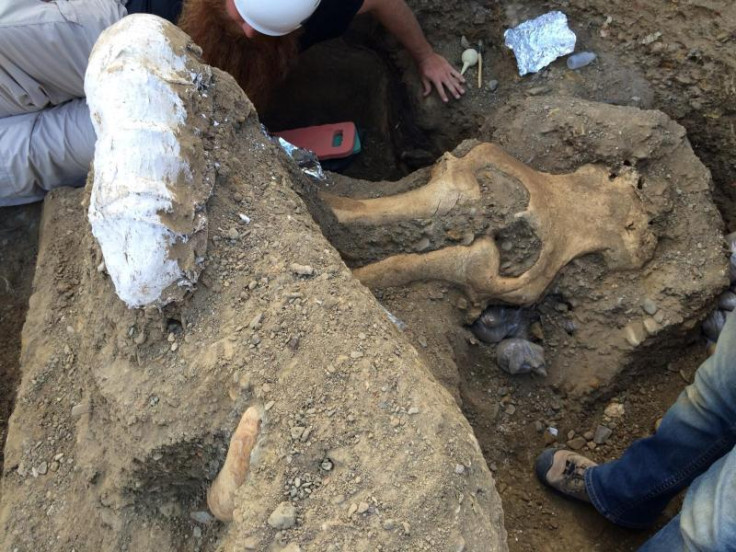Mysterious mammoth fossil sheds light on species migration to California's Channel Islands
Scientists do not know which species the strange mammoth found on Santa Rosa Island belonged to.

A 13,000 year old, exceptionally well preserved mammoth skull has been unearthed from an eroding stream bank on Santa Rosa Island, at the Channel Islands National Park (USA). The find presents scientists with a mystery, as they have so far been unable to link it to one of the two mammoth species roaming the area at the time.
The remains were actually spotted for the first time two years ago, but the full excavation has just been completed and hypothesis regarding the mammoth is only just emerging. In 2014, National Park Service biologist Peter Larramendy stumbled upon an ivory tusk protruding from gravel sediment on Santa Rosa, during a stream study he was conducting.
A team constituted of retired National Park Service archaeologist Don Morris, paleontologist Justin Wilkins and preparator Monica Bugbee then worked at the site to retrieve the skull and study it.
The fossil was dated thanks to analysis of charcoal samples found close by – scientists estimate these are approximately 13,000 years. This suggests the mammoth would have lived side by side with the Arlington Man, the oldest human skeletal remains in North America, which were also found on Santa Rosa Island.
Thus, the findings have important implications for our understanding of the prehistoric ecosystem of the region.
"This mammoth find is extremely rare and of high scientific importance. It appears to have been on the Channel Islands at the nearly same time as humans," Wilkins points out. "I have seen a lot of mammoth skulls and this is one of the best preserved I have ever seen."
Pygmy or Columbian?
Preliminary analysis of the skull's size and tusks have puzzled the scientists. Indeed, the size of the specimen is unusual as it is not large enough to be clearly identified as a Columbian mammoth – an extinct species that inhabited North America – but it is too large to be associated with a pygmy mammoth.
The most likely hypothesis is that these are the remains of a young Columbian mammoth, although it is also possible that the animal was an intermediate-size species researchers didn't know about.

So far, studies have hinted that the Columbian mammoth migrated to the Channel Islands from the mainland during the past two ice ages, as sea levels were lower and the island land mass was closer to the coast. It is believed that, over time, the mammoths that migrated evolved – reaching a much smaller size – and thus became an endemic pygmy species known as Mammuthus exilis. This evolutionary process of downsizing could have occurred rapidly, over several thousands of years.
Two migrations
The dating of the skull to around 13,000 years ago, combined with the previous discovery of an 80,000-year-old pygmy mammoth tusk in the area suggest that migration of Columbian mammoths to the Channels Islands occurred in two waves, at the time of two ancient glacial periods. The first one may have started 150,000 years ago, and the second during the most recent ice age, 10 to 30,000 years ago. Columbian mammoths are then thought to have become extinct some 11,000 years ago.
The scientists will now carry further tests to better understand when the mammoth lived, and more importantly, which species it belonged to. This includes measuring the number, spacing, and thickness of the enamel plates on the mammoth's teeth – which will allow a more precise reading (within two years of death). Such analysis will be helpful to determine whether it was a pygmy or Columbian mammoth - or less likely, a species in-between.
© Copyright IBTimes 2025. All rights reserved.






















